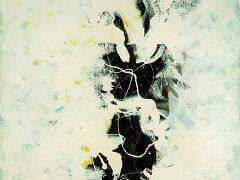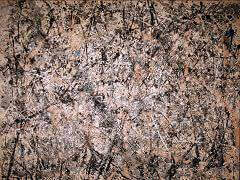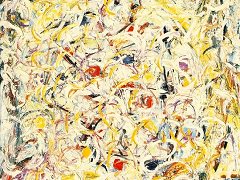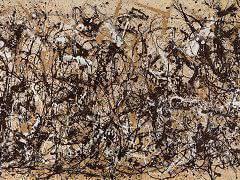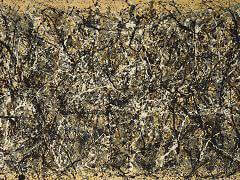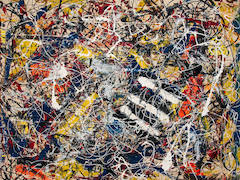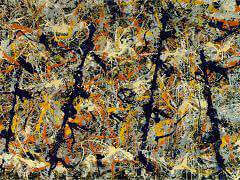War, 1947 by Jackson Pollock

Pollock's famous "War" is the only drawing he ever titled, and, although inscribed "1947," it relates to the iconographically complex images he produced earlier, around 1943-44. In this composition,
the monstrous destruction of war is conveyed both by the fierceness of the graphic execution and by the imagery, much of which is camouflaged by the many linear motions, darkened and thickened and
highlighted with flashes of red and yellow pencil to heighten the dramatic intensity. The drawing's narrative is one of horrific proportions.
A human figure and a bull are flung onto a raging pyre of human debris. To the right, the crucifixion of a hooded figure is suggested. Some of the imagery may be traced to Picasso's
pair of etchings "The Dream and Lie of Franco," and to the Spanish artist's epic painting on war, Guernica, both from 1937. Yet even as
Pollock's work engages with the history of art and offers a statement on the universal horrors of war, it also has a personal dimension, drawing on from the psychological language of Surrealism
that fueled his early works.



